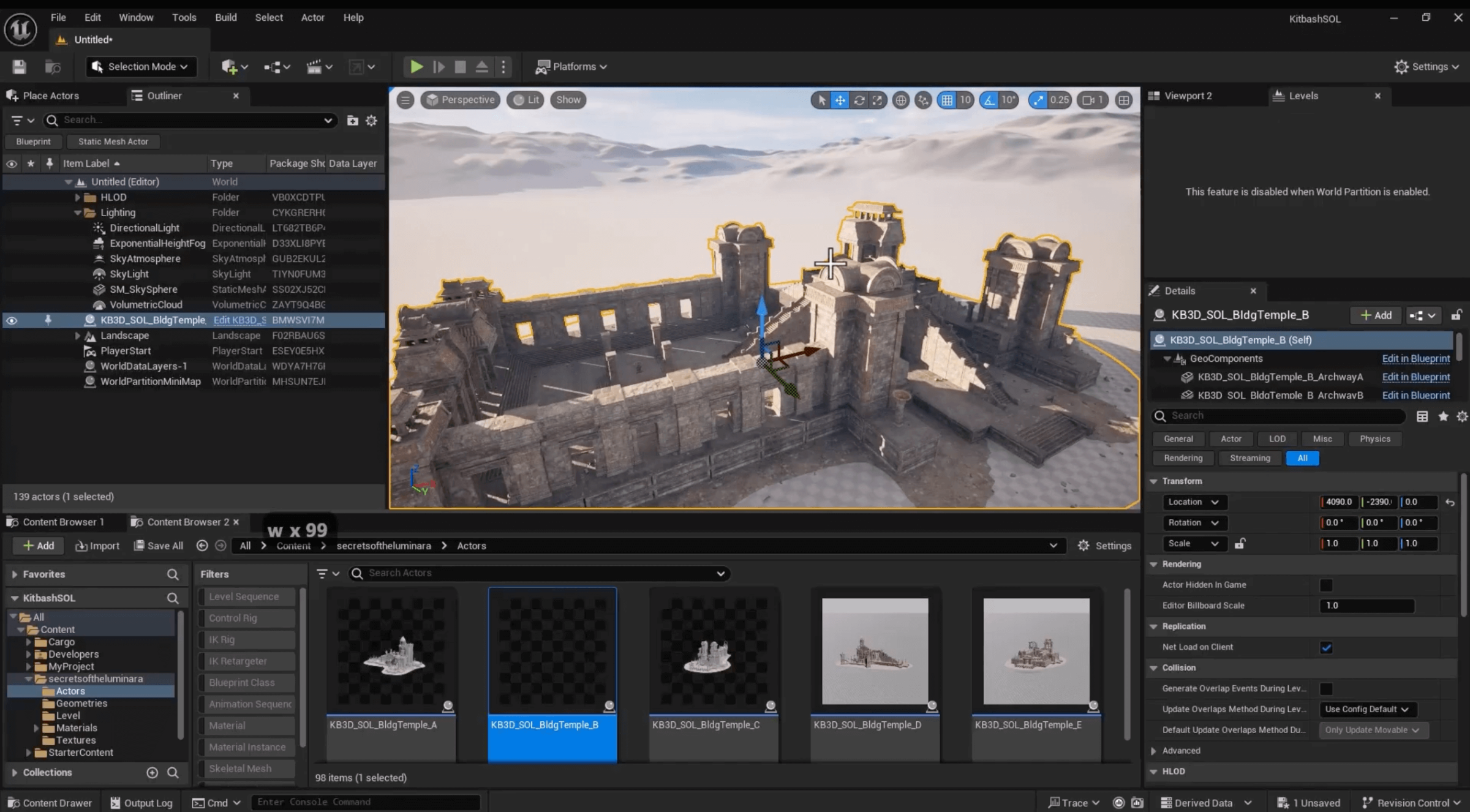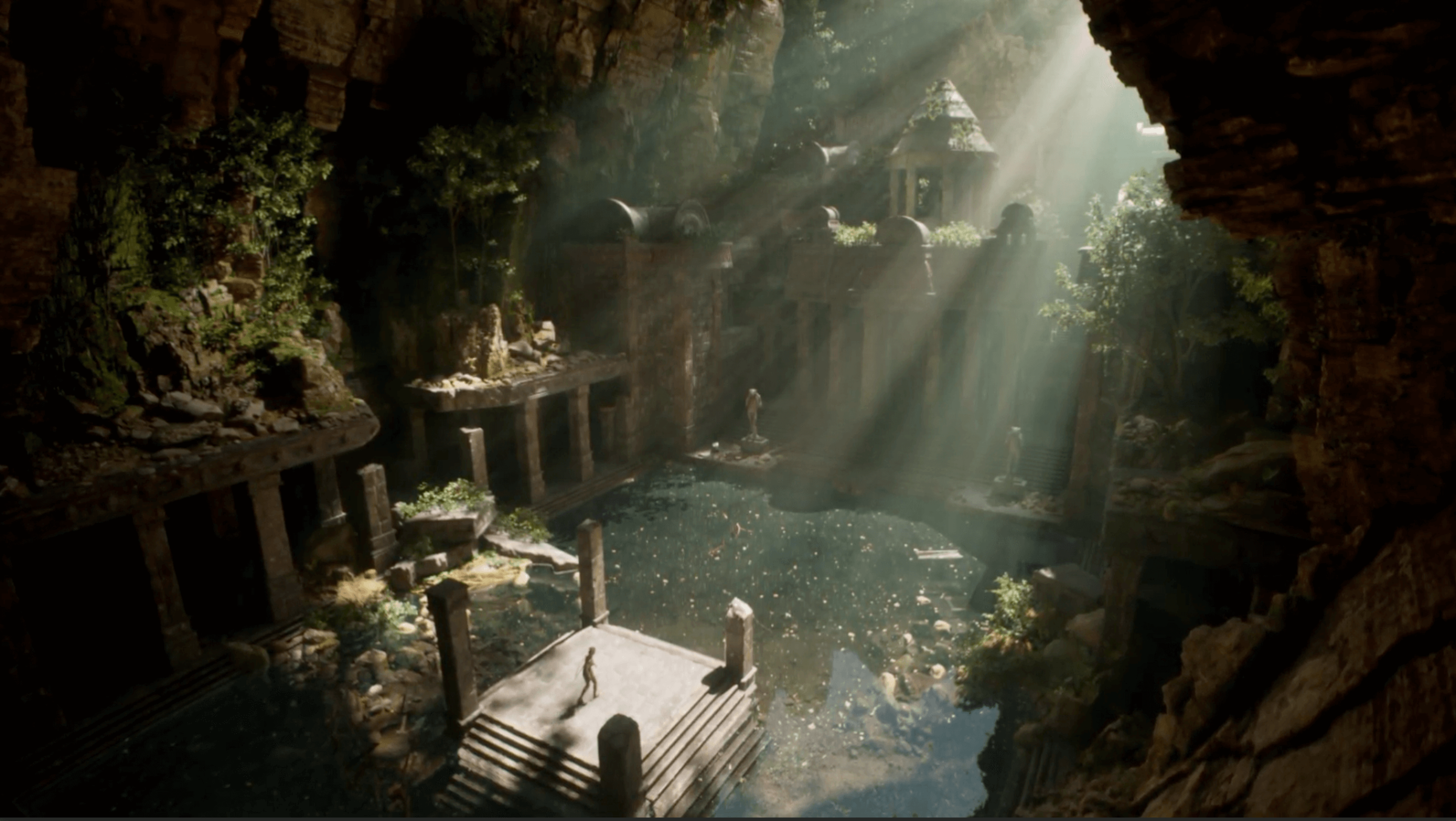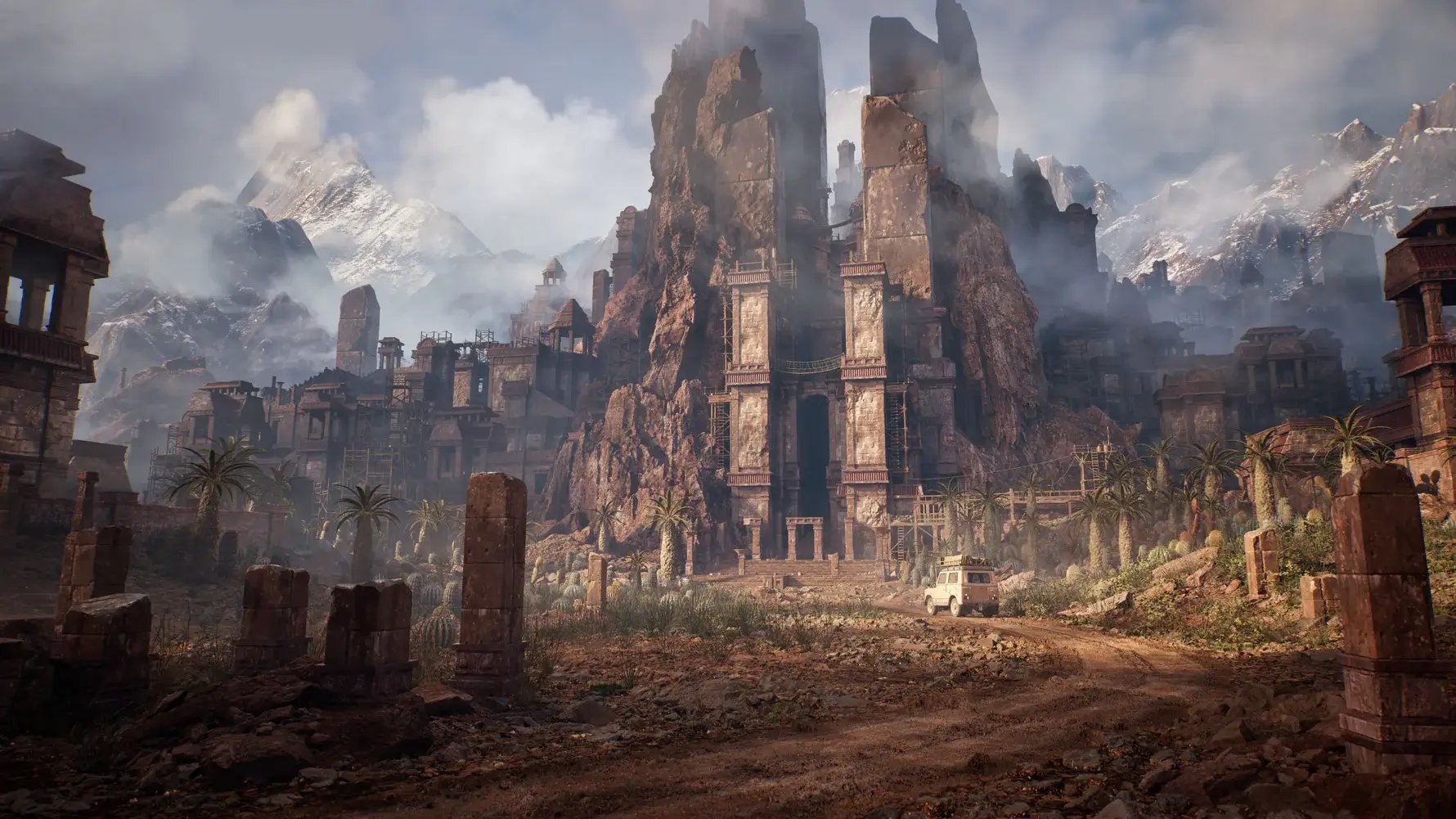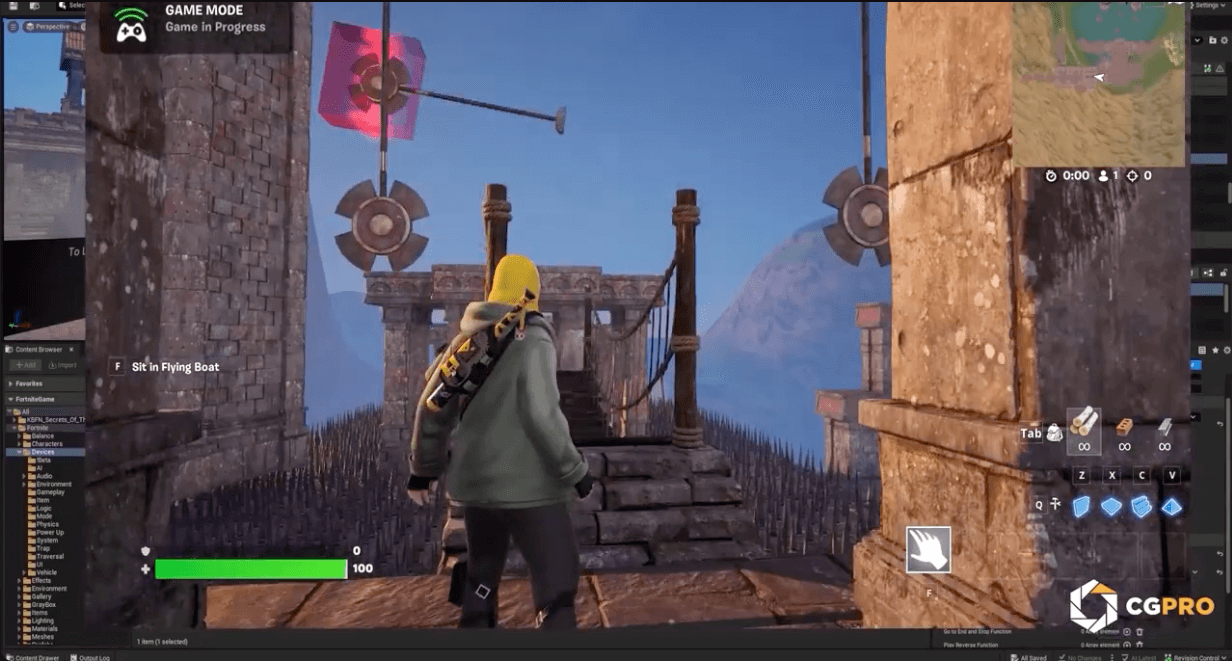Kosuke Iwasaki, a Generalist at DNEG and Unreal Engine expert, brings a unique blend of creativity and technical skill to his work in visual effects and real-time environments. After transitioning from a career as a videographer, Kosuke’s passion for VFX and CG led him to explore the boundless possibilities of Unreal Engine. In his latest collaboration with The Gnomon Workshop, Kosuke dives deep into the art of lighting, composition, and storytelling with an Unreal Engine 5 tutorial using our free Secrets of the Luminara Kit. In this interview, Kosuke shares insights into his journey, the evolution of his work, and how real-time tools like Unreal Engine enhance creative freedom and spontaneity in world-building.
Can you tell us a bit about your journey from being a videographer in Japan to your current role at DNEG? What inspired you to transition into visual effects and real-time environments?
I began my career as a videographer/filmmaker, working on brand, corporate, and wedding videos. I enjoyed the entire filmmaking process, from pre-production to post-production, and this hands-on experience allowed me to learn the fundamentals of the craft. However, there were moments where I couldn't achieve certain shots in real life, and that's when I realized the limitless possibilities of VFX and CG. That realization drove me to challenge myself and pursue a career in the Hollywood VFX industry.
After studying Compositing at LostBoys School of VFX for a year, I was hired by ILM as a Digital Paint Artist. There, I learned how much effort goes into creating a single pixel-perfect shot. Although I initially only knew 2D VFX, I taught myself 3D techniques and was eventually transferred to ILM's Generalist Department. This exposure, and my subsequent experience at Barnstorm VFX, gave me a wide range of skills in environment generalist workflows.
When Unreal Engine 5 was about to launch, I was captivated by its potential and started learning it. Now, as a Generalist at DNEG's Advanced Development Group, I help the company and its artists leverage Unreal Engine for films, TV shows, and various other projects.
You’ve collaborated with The Gnomon Workshop for various tutorials. What do you enjoy most about teaching, and how do you approach designing tutorials that resonate with both aspiring and experienced artists?
Honestly, I was quite nervous about teaching at first. I love learning, but I often feel like there's always more for me to master, which made me hesitant to teach—especially on a platform where industry veterans both teach and watch. However, I realized that being relatively new to the field allowed me to empathize with the challenges beginners face. This perspective became my strength, and I began focusing on addressing the specific hurdles that fresh learners encounter.
As I continue expanding my knowledge of Unreal Engine, I make it a point to note areas where newcomers typically struggle, ensuring that future tutorials cover those tricky parts. For experienced artists, I’ve found that they often look for specific techniques or topics, and I’ve received many requests for more advanced tutorials. I'm excited to dive into more detailed subjects, not only to cater to them but because teaching pushes me to learn even more in the process.
The Secrets of the Luminara workshop with The Gnomon Workshop dives deep into creating cinematics with Unreal Engine. What was your favorite part of developing this tutorial, and what key skills do you hope viewers will gain?
My favorite part of developing the tutorial was diving into art theory and lighting, as they play such a significant role in shaping the final image. Lighting and composition are critical for conveying emotion and telling a story through cinematics. No matter how much time you spend on details, the way you present your work can make all the difference.
Through this tutorial, I hope viewers will gain an understanding of how to use lighting and composition to create powerful cinematic visuals that enhance storytelling.
As someone who has worked with both traditional VFX and real-time engines, how does Unreal Engine enhance your creative process, particularly when using assets like Secrets of the Luminara?
Coming from a filmmaking background, I’ve always missed the spontaneity of shooting on set, where creative decisions happen in the moment. Traditional VFX often requires meticulous preparation, but Unreal Engine brings back that real-time interaction, allowing me to make creative decisions on the fly. It feels natural, like being on set, and sometimes those spontaneous choices lead to surprising results.
Using pre-made assets like those in Secrets of the Luminara speeds up the process and makes it even more enjoyable. KitBash3D assets, in particular, are well-organized and easy to work with, keeping my project clean and efficient while giving me more time to focus on creative exploration.
How has Cargo impacted your workflow as an artist? Are there specific features or aspects of Cargo that you find particularly beneficial when working on complex projects like Secrets of the Luminara?
KitBash3D’s Cargo software has been a game-changer. Normally, when working in Unreal, importing asset packs requires downloading entire packs and manually browsing and migrating assets. This can be time-consuming and disrupt the workflow. With Cargo, you can browse the kits and download specific assets with just one click—it's much more streamlined.
Another advantage is that KitBash3D assets follow a consistent organization pattern and use a master material system, making it easy to work with and modify as needed. It’s especially helpful when managing larger, more complex projects.
You’ve created training materials and done extensive R&D in your role at DNEG. How do you balance technical innovation with artistic expression in your work?
Simplicity is key. In real-time engines, performance is critical, so while a complex setup may produce amazing results, it often comes at the cost of efficiency. If something is too complex, it can become heavy to run or confusing for artists to work with.
I learned this during my time as a Digital Paint Artist. When something was too difficult to achieve in 3D, we would often simplify it by painting. The same principle applies today—sometimes a complex simulation can be replaced by a simpler solution, like using a Niagara sprite instead of a full pyro sim. The important thing is the end result, and if a simpler approach works, that’s what matters. One mentor’s advice that stuck with me is to always "Keep It Simple, Stupid!" (KISS).
The cinematic quality of your work is truly stunning. How do you approach storytelling through visuals, and what role do assets like KitBash3D Kits play in building immersive scenes?
Even though I'm not a writer, I believe having a strong backstory is essential when building any visual. Once you have a story in mind, it adds depth to the scene and makes the creative process far more enjoyable. For instance, when designing a scene, I think about questions like: Why is this wall broken? Who built this structure and why? What is the character’s purpose here? Every object in the scene should carry a piece of that story.
KitBash3D Kits are a great starting point because they provide a solid foundation to quickly assemble a scene. From there, you can tweak and build upon it to tell your own unique story, making the world feel immersive and alive.
For those new to world-building and real-time environments, what would you say are the top three skills or techniques they should focus on mastering?
First, observation skills. Learn to observe the world around you, whether through photography, drawing, or simply being mindful. It’s not just about copying what you see but understanding the history behind objects, textures, and environments.
Second, develop your best learning method. The industry evolves rapidly, so it's crucial to constantly update your skills. Everyone learns differently—some through tutorials, others by experimenting. For me, I focus on understanding the fundamentals, and for more advanced topics, I look them up as needed.
Lastly, communication skills. Collaboration is essential in this industry, so being able to communicate effectively will help you stand out. Good communication allows you to understand the needs of a project and seek valuable advice from more experienced artists, even if you’re still developing your artistic abilities.
Throughout your career, you’ve worked on films, streaming series, and immersive experiences. How do these different mediums influence your approach to creating environments and cinematics?
The scale of the project often dictates my approach. On larger productions, the scope of my role tends to be more focused, so precision and organization become critical. I aim to create setups that work seamlessly with the pipeline to ensure everything runs smoothly.
On smaller projects, I typically take on more responsibilities, which requires a more creative and fast-paced approach. In both cases, understanding your role within the team and the specific needs of the project is key to making informed decisions that benefit the overall production.
What advice do you have for aspiring artists who wish to build a career in the VFX and immersive tech industry?
I always tell aspiring artists to find something they love to create just for themselves. This personal passion will fuel your career and create a positive cycle of growth. If you can align your work with what excites you creatively, you'll find immense energy and satisfaction in your daily tasks.
You might not get there immediately, but keeping your personal artistic goals in mind will act as a compass, guiding you through the industry until you reach the point where you're creating work that you truly enjoy every day.
Finally, looking ahead, are there any upcoming projects or personal goals you’re excited about? How do you see the future of real-time environments evolving?
I'm particularly excited about the possibilities real-time filmmaking, especially in combining complex animations and characters. The synergy between animated elements and the surrounding world can greatly enhance storytelling, and I’m eager to explore that further.
I know this will come with technical challenges, but I’m excited to tackle them and share what I learn with others. I’ll continue using KitBash3D to streamline my creative process and hope to use their assets in a short film project in the near future.
A big thank you to Kosuke Iwasaki for taking the time to share his insights, and to The Gnomon Workshop for partnering with us to create this incredible Unreal Engine 5 tutorial. Be sure to explore many other expert-led courses available at The Gnomon Workshop. Keep pushing creative boundaries and happy KitBashing!
Interview conducted and article written by Carmen Moreno.




